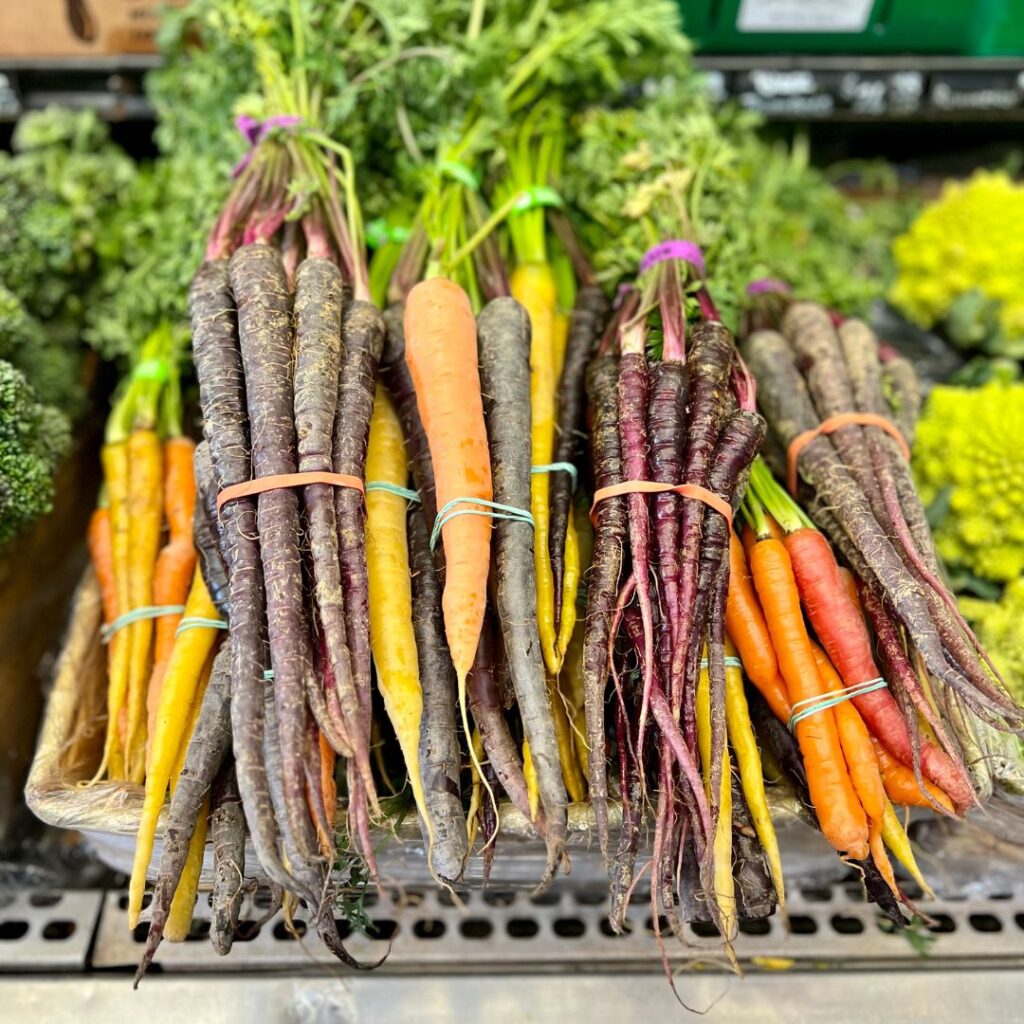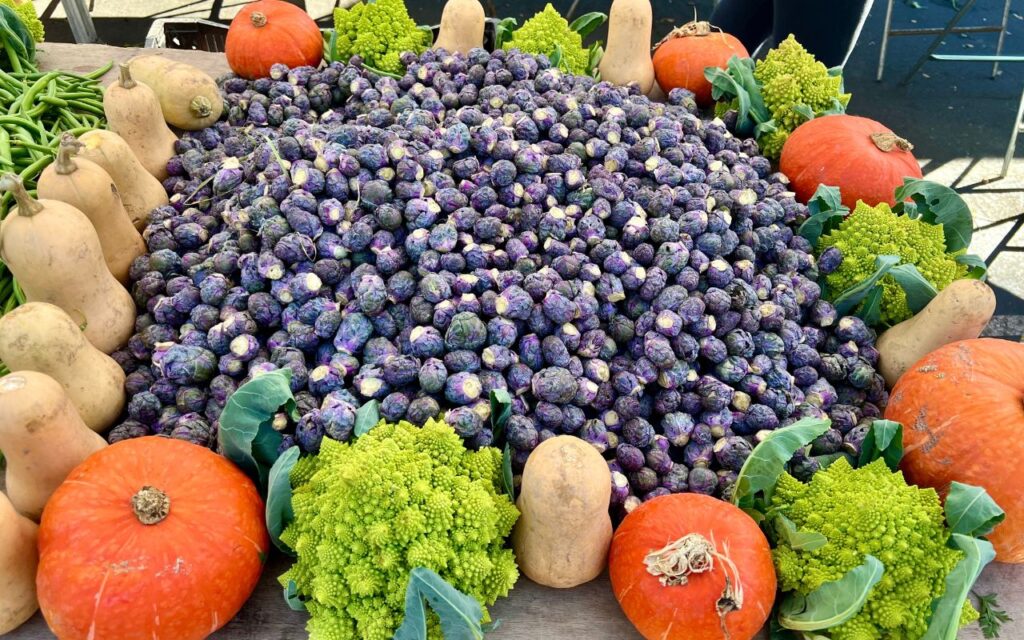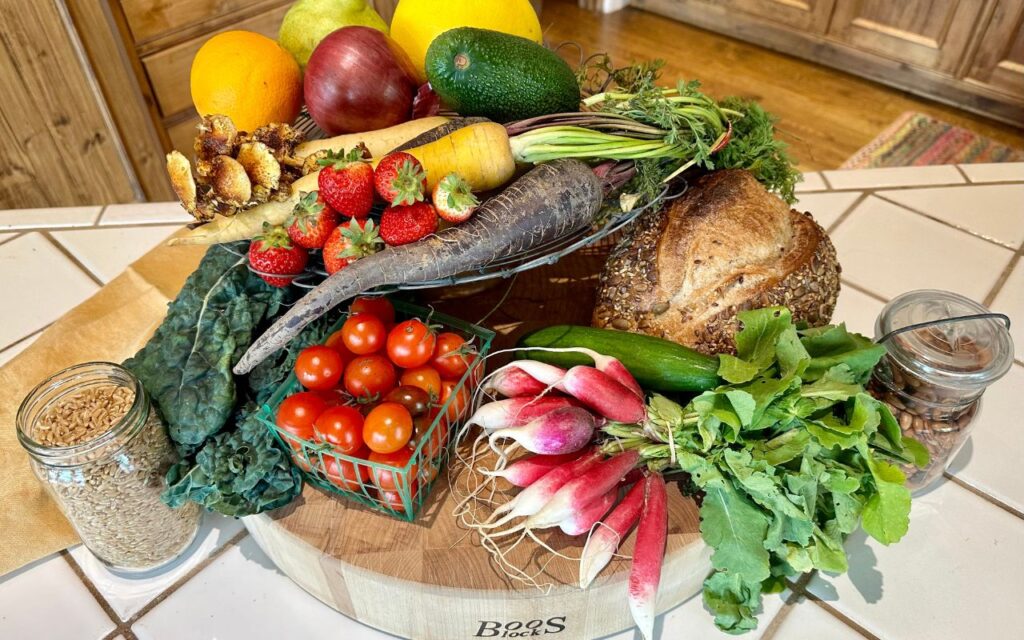Plant-Based Baby Feeding Guide

Are you committed to encouraging a healthy plant based diet for your child? Learn all about the nutrition basics in this plant based baby feeding guide for infants and toddlers, filled with expert baby nutrition tips.
It’s never too early to encourage your infant or toddler to power up on plants. When children start eating a healthful, plant-based diet early on, they can reap multiple health benefits later in life, including lower risks of developing obesity, type 2 diabetes, and heart disease. That’s because their diets are richer in essential, health-promoting nutrients, such as fiber, plant protein, slow-digesting carbs, vitamins, minerals, healthy fat, and phytochemicals—plant compounds with antioxidant and anti-inflammatory activity. Infants and toddlers who are introduced to a wide variety of foods, especially vegetables, are more likely to eat them as they get older. Eating plenty of vegetables means children reap the rewards of oodles of phytochemicals, like lycopene in tomatoes and beta-carotene in carrots. Which explains why vegetable consumption can help protect against obesity and chronic diseases later in life.
No matter what your personal eating style—whether you are an omnivore, flexitarian, or vegetarian—you and your child can benefit from eating more plant foods. According to the Academy of Nutrition and Dietetics, a well-planned vegetarian or vegan diet can meet the nutritional needs of growing infants and children. All it takes is a little planning to include a variety of nutrient-dense foods to meet all the child’s needs.

Keep in mind that a plant-based diet for young children won’t provide the same benefit if it’s rich in sugary beverages, low-nutrient crackers, and French fries—these are all technically plant foods! The beauty of a plant-rich diet for your child is when they enjoy foods that come from the whole plant. So focus on real, whole, plant foods, such as vegetables, fruits, pulses, and grains.
Check out this complete baby feeding guide to power your young children’s diets with plants to start fueling a healthy plant-based diet today.

Baby Nutrition Guide
It’s important to get adequate amounts of all the major food groups in your young child’s diet as she moves from solely breast or infant formula to solid foods. They need to consume the following foods to meet their energy needs for optimal growth and development (the texture and types of foods differ depending on age):
- Protein: Protein is important to build all of those tissues as the child grows and develops. Plant protein sources include tofu, soymilk, beans, lentils, and nut butters, like peanut and nut butters.
- Grains: Grains, such as wheat, rice, quinoa, barley, and oats, provide important sources of energy (carbohydrates), as well as essential nutrients for healthy development, including fiber, vitamins (B6, E, niacin, pantothenic acid, riboflavin, thiamin, and folate), minerals (calcium, iron, magnesium, phosphorus, zinc, copper, manganese, selenium, and potassium), and even some protein and phytonutrients—plant compounds with antioxidant activity.
- Vegetables: A variety of vegetables—aim for a rainbow of colors and tastes—such as carrots, tomatoes, greens, beets, squash, and peas provide healthy carbs for energy, fiber for good digestion, and essential vitamins (A, B6, C, K, folate, thiamin, riboflavin, niacin, and pantothenic acid), and minerals (iron, potassium, manganese, magnesium, phosphorus, calcium, zinc, copper, and selenium), plus a bevy of phytonutrients, and even some protein.
- Fruits: A bounty of fruits, such as berries, peaches, bananas, and pears, offer natural sweetness, plus healthy carbs for energy, fiber for gut health, and a range of essential vitamins (A, B6, C, E, K, riboflavin, thiamin, niacin, and pantothenic acid) and minerals (calcium, potassium, manganese, and copper) for proper development, plus a cache of phytonutrients.
- Healthy Fats: Make sure that healthy fats, like nuts, seeds, olives, avocado, and plant oils, are part of the diet in order to meet needs for essential fatty acids, which are key for brain health.
- Supplements: It’s important to ensure an adequate supply of vitamin B12—available only in animal foods—in the diet through supplements if the child eats exclusively plants for good brain health. Other nutrients that may need supplementation include vitamin D for healthy bones and long-chain omega-3 fatty acids for brain development. Speak to your health care provider about options.

Month by Month Plant Based Baby Feeding Guide
While every child is unique, and you should monitor their readiness for foods before introducing new foods, this serves as a general guide for feeding your baby a healthy plant-based diet.
4-6 Months
Ideally, infants should be exclusively breastfed for the first six months, and breastfed along with solid foods through the first year of life or longer. At about 4-6 months, babies begin to show developmental signs that they are ready for solid foods. One of the first solid foods you can try is iron-fortified infant cereal based on a single grain mixed with breast milk or formula. You can start trying one or two tablespoons of single purees of vegetables, such as peas, green beans, and squash to first introduce savory flavors, followed by fruits such as prunes, and protein foods, such as pureed, strained beans, one new food at a time.

6-8 Months
In addition to breast milk and formula, you can now start adding an increasingly fun variety of healthy plant foods as baby shows signs of readiness. Offer three to four tablespoons of plant protein foods such as pureed lentils to support growth, healthy whole grains cooked cereals for the energy they need, and a variety of pureed fruits (try apricots, berries, apples) and vegetables (like spinach, beets, zucchini) to provide the phytonutrients and essential nutrients their bodies need. By increasing this diversity of foods, you’ll give your baby a greater exposure to a variety of wholesome foods to expand his or her palate. In addition, you can start providing developmentally appropriate foods for picking up, such as soft crackers and breads, as the baby starts to develop these skills.

8-12 Months
At this stage, continue to increase the amount, variety, and texture of fruits, vegetables, grains, and protein foods to keep up with the growth and development demands of the baby, in addition to breast milk and formula. Satisfy your baby’s growing appetite with additional servings of protein and fiber to keep them feeling full and satisfied during mealtime. Try to introduce new flavors and textures, like four to six tablespoons of pureed, mashed or chopped soft fruits (try pears, bananas, and strawberries), vegetables (like green beans, chard, and asparagus), and tofu or beans, in addition to other finger foods during this stage, such as pieces of toast with thinly spread nut butters. Encourage them to practice self-feeding as their skills develop.
1-3 Years
During this period, it’s important to keep up with the child’s development and growth needs by aiming for adequate servings of plant proteins (pulses, nuts, seeds), whole grains (such as quinoa, oats, wheat), fortified soymilk, fruits (like oranges, cherries, and peaches), vegetables (such as squash, tomatoes, and snow peas), and healthy fats from avocado, nuts and seeds. These plant foods will provide a diverse range of important nutrients—carbs, protein, fats, vitamins, minerals—the baby needs to develop the brain, organs, muscles, and beyond.

6 Tips for Introducing Solid Foods to Babies
There are no hard and fast rules for how to introduce solids, but there are some strategies. Some parents begin with single-ingredient infant cereals, while others opt for simple, single-ingredient fruits or vegetables. If you choose infant cereal, mix about 1 tablespoon of cereal with 2-3 tablespoons of breast milk or formula. The consistency should be somewhat thin to start. If you choose to lead with purees, select a single-ingredient fruit or vegetable puree with a smooth consistency. Keep in mind that thinner consistencies are easier for baby to swallow, and thicker textures and pieces should be introduced as your baby progresses.
When you decide it’s time to begin solids, here are 6 key tips:
- Breastfeed or bottle-feed your baby first, so that she is not too hungry or impatient to appreciate this new way of eating.
- Have your baby face you, either supported on your lap or in an infant seat or high chair.
- Use a softly-coated infant spoon to protect baby’s delicate gums.
- Place a small amount of food on the tip of the spoon and bring it to your baby’s lips. She may try to suck it off the spoon, or she may open her mouth for the spoon. Let her try it her way and be sure not to empty the spoon into her mouth.
- Try letting your baby feed herself…she might just love showing off her independence!
- Remember that if your baby rejects a food at first, it doesn’t mean she won’t learn to like it eventually. Reintroducing foods will help your baby learn to love a variety of tastes and flavors!
Expect things to get a bit messy, and don’t be camera shy…you’re making milestones here!

How to Start Your Child’s Plant Based Journey
Here are a few more tips to get you and your tiny tot started on a veggie forward journey.
- Breastfeeding Moms, Start Veggies Early
Introduce your baby to veggies through your breast milk! Start your baby’s love for the flavors and nutrients of vegetables by including a variety in your own diet. - Make Their First Solids About Veggies
As you move from solely breast milk or infant formula, make sure the first foods your baby is exposed to include veggies to start developing that palate towards savory vegetables over sweet tastes. These can include milder, pureed, strained vegetables, such as peas and green beans. - Expose Young Kids to More Vegetables
Studies show that it takes multiple exposures of vegetables to get young kids’ palates more familiar with them. And the earlier the better! So, don’t give up! Even if they spit them out the first time or the first several times, eventually they will become more familiar with, and learn to like and be more apt to eat those veggies with a grin. - Think Veggie Diversity
Try an ever-increasing range of flavors—pumpkin, spinach, carrots, beans, corn—in purees and toddler foods to further develop your child’s palate towards exciting new flavors. Open them up to the whole wide world of healthy plant foods that awaits them. - Sneak Them In
Don’t feel guilty about sneaking in veggies here and there. Studies show this strategy really works as little ones learn to like the taste of vegetables. However, it’s also a good idea for them to learn to recognize and like the tastes of different types of vegetables. Mix pureed vegetables into fruit purees for infants, blend fresh greens (blueberries will cover up the green color) into smoothies; add shredded zucchini into tender muffins, pancakes, and bars; and puree squash into creamy soups. - Add Veggies to Favorite Dishes
Take advantage of young children’s all-time favorites, such as soup, and pile on the veggies. Cook up flavorful veggies, such as tomatoes, zucchini, and squash, into a thick soup and puree it. You can even stir in pureed vegetable vegetables into a pot of soup to up the vegetable profile of that dish. - Pair Vegetables with Toddler-Friendly Foods
Studies show that when less familiar vegetables are paired with young children’s favorite foods, such as potatoes, they consume more of them. So, serve a soft or pureed veggie cooked at home or storebought in a small bowl and top it with mashed potatoes to make small veggie pot pies. - Make Eating Vegetables Fun
Look for veggies that are fun for young children to pick up and pop in their mouths as they start to grasp foods. As infants start developing their young palates and eating skills to include more whole vegetables, make them exciting. Try small pieces of tender veggies that they can dip and dunk in a pretty pink Beet White Bean Hummus. Let them paint their small plates with clouds of mashed potatoes, a lawn of spinach puree, and carrot crescent flowers as their imagination grows.
For other blogs on healthy plant-based diets for children, check out the following:
5 Tips on How to Teach Your Kids to Cook
A Healthy Plant-Based Diet for Kids with Plant-Based Juniors
Power Up Kids’ Eating Habits
Clean Eating for Kids
More Tools for Eating and Living the Goodness




